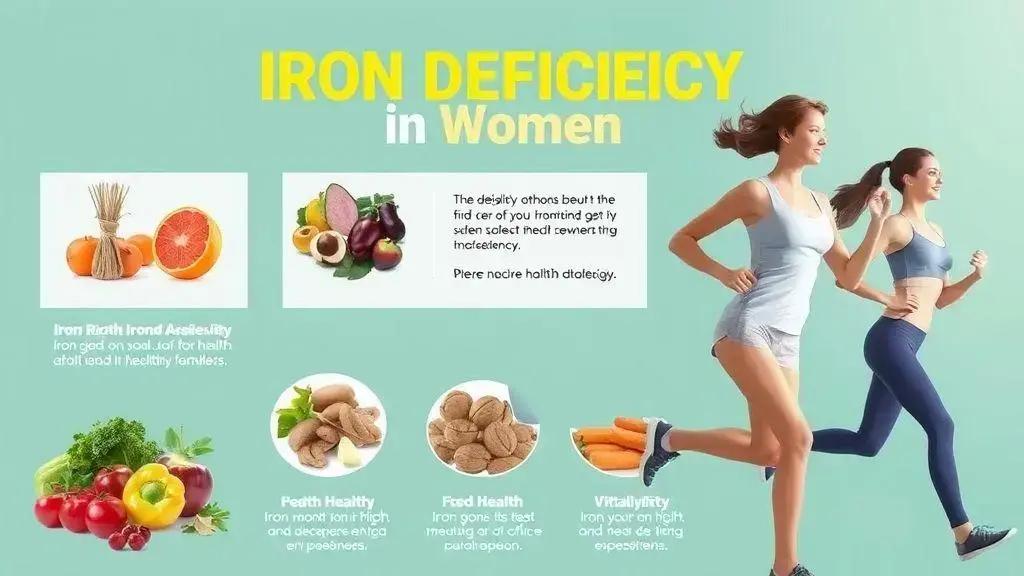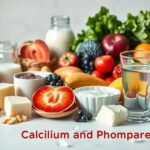Iron deficiency is a widespread issue, particularly among women, leading to symptoms like fatigue, pale skin, and increased susceptibility to infections if left untreated.
Iron deficiency is often a silent thief, stealing energy and focus from women’s lives. Are you feeling persistently fatigued?
Why iron deficiency is common in women
See today's top solution for balance & energy
Gentle guidance trusted by our community.
Iron deficiency is a widespread issue among women, often stemming from several key factors. One major reason is the increased iron demand during menstruation. Women lose blood each month, which can lead to a decrease in iron levels, especially if dietary intake is insufficient.
Pregnancy also plays a significant role. Expecting mothers require more iron to support the developing fetus, which can further deplete their own reserves. This highlights the importance of monitoring iron levels during these critical life stages.
In addition, lifestyle factors such as vegetarian or vegan diets can contribute to iron deficiency. Plant-based sources of iron are not as easily absorbed by the body compared to iron from animal products, making it crucial for women following such diets to plan their meals carefully to include iron-rich alternatives.
Furthermore, certain medical conditions, such as gastrointestinal disorders, can affect iron absorption, leading to deficiencies. Women with conditions like celiac disease or inflammatory bowel syndrome should pay extra attention to their iron levels.
Age can also influence iron status. Teenagers and young adults might face challenges due to growth spurts and dietary choices that do not meet their nutritional needs. Hence, awareness and education on iron intake are essential for maintaining optimal health.
Symptoms and signs of iron deficiency
Recognizing the symptoms and signs of iron deficiency is crucial for timely intervention. One of the most common indicators is fatigue. When your iron levels are low, your body struggles to deliver enough oxygen to your muscles and organs, making you feel weak and tired.
Another frequent symptom is pale skin. This occurs because reduced hemoglobin levels can diminish the red color in your blood. Often, a noticeable change in the color of your skin or the inside of your eyelids may suggest an iron shortage.
Beyond fatigue and paleness, those with iron deficiency may experience shortness of breath, especially during physical activities. This happens as your body tries to compensate for the lack of oxygen. If you find yourself easily becoming breathless during simple tasks, it may be time to check your iron levels.
Heart palpitations can also arise, where you may feel your heart racing or beating irregularly. This condition indicates that your heart is working harder to pump oxygen-rich blood throughout your body due to diminished iron.
In some cases, cravings for non-food items like dirt, chalk, or ice can occur. This unusual behavior, known as pica, is linked to iron deficiency and reflects an imbalance in nutritional needs.
Lastly, keep an eye out for restless legs syndrome, which causes uncomfortable sensations and an urge to move the legs, particularly during rest. This can disrupt sleep and further contribute to feelings of fatigue.
How to improve iron intake naturally
Improving your iron intake naturally is essential for maintaining healthy levels and preventing deficiency. One of the best ways to do this is by incorporating a variety of iron-rich foods into your diet. Foods such as red meat, poultry, and fish are excellent sources of heme iron, which is easily absorbed by the body.
For those following a vegetarian or vegan diet, plant-based sources of iron are also effective. Foods such as lentils, chickpeas, beans, tofu, and fortified cereals provide non-heme iron. To enhance absorption, pair these with vitamin C-rich foods like citrus fruits, berries, or bell peppers. This combination can significantly increase the amount of iron that your body can absorb.
Cooking in cast iron cookware can also boost the iron content of your meals. Acidic foods, such as tomato sauce, tend to absorb more iron from the cookware, adding a bit more iron to your diet.
Another effective method is to consume iron supplements if dietary changes are not sufficient. However, it’s important to consult with a healthcare provider before starting any supplements to determine the right dosage.
Additionally, avoiding certain foods around mealtime can help maximize iron absorption. Foods containing calcium, such as dairy products, or those high in tannins, such as tea and coffee, can inhibit iron absorption when consumed at the same time.
Long-term effects of untreated iron deficiency
Untreated iron deficiency can lead to several long-term health issues that may significantly impact a person’s quality of life. One of the most severe consequences is anemia, a condition where the body doesn’t have enough healthy red blood cells to carry adequate oxygen to tissues. Symptoms of anemia can include extreme fatigue, weakness, and pale skin, making daily activities challenging.
In addition to anemia, chronic iron deficiency can lead to cardiovascular problems. The heart works harder to pump blood when iron levels are low, increasing the risk of heart failure, arrhythmias, and other heart-related issues over time.
Women, in particular, may experience complications during pregnancy. Iron deficiency during pregnancy can lead to preterm delivery, low birth weight, and developmental delays in children. This highlights the importance of monitoring iron levels for women of childbearing age.
Furthermore, long-term iron deficiency may impair immune function. With lower iron levels, the body may struggle to fight off infections and illnesses effectively. This can leave individuals more susceptible to various health threats.
Additionally, chronic iron deficiency has been linked to cognitive decline. Individuals may experience difficulties with concentration, memory issues, and a decrease in overall mental performance. This can affect studies, work, and daily life.
Understanding and Addressing Iron Deficiency
Iron deficiency is a serious issue that can affect many aspects of life, especially for women. By recognizing symptoms early and taking steps to improve iron intake, individuals can avoid long-term health problems. Eating a balanced diet rich in iron and consulting with healthcare providers when necessary are key steps toward maintaining good health.
Whether through dietary changes or appropriate supplements, addressing this deficiency can have a positive impact on energy levels, immune function, and overall well-being. Remember, taking action early can make a significant difference in one’s quality of life.
FAQ – Frequently Asked Questions about Iron Deficiency
What are the common symptoms of iron deficiency?
Common symptoms include fatigue, pale skin, shortness of breath, heart palpitations, and cravings for non-food items.
How can I improve my iron intake naturally?
You can improve your iron intake by including iron-rich foods like red meat, legumes, and leafy greens in your diet, and pairing them with vitamin C-rich foods.
What can happen if iron deficiency is left untreated?
Untreated iron deficiency can lead to anemia, cardiovascular problems, weakened immune function, and cognitive decline.
Are iron supplements necessary for everyone?
Not everyone needs iron supplements. It’s best to consult a healthcare provider to determine if you need them based on your individual health and dietary needs.
What is the difference between heme and non-heme iron?
Heme iron, found in animal products, is more easily absorbed by the body than non-heme iron, which is found in plant-based foods.
How can cooking methods affect iron absorption?
Cooking in cast iron cookware can increase the iron content of certain foods, particularly acidic dishes, helping to enhance iron absorption.
See today's top solution for balance & energy
Gentle guidance trusted by our community.






